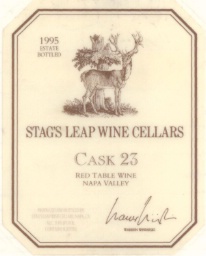

Stags Leap soils-eroded volcanic and old river sediments-encourage well established root systems and result in complex, terroir-driven wines. 81 Cabernet Sauvignon, 11 Merlot, 4 Malbec, 2 Tannat, and 2 Petit Verdot. Very approachable and pleasing upon release, this wine is sure to impress and pair well alongside many culinary dishes. While many varieties could thrive here, Cabernet Sauvignon and Merlot dominate with virtually no others, save for a spot or two of Syrah. Cocoa-powdery tannins provide a pleasurable mouthcoating texture, all enfolding into a lengthy mouthwatering finish. In combination with the cool evening breezes from the San Pablo Bay just south, this becomes an optimal environment for grape growing.


The vineyards in this one-of-a-kind wine growing region receive hot afternoon air reflecting off of its eastern palisade formation. When a 1973 Stag’s Leap Wine Cellars Cabernet Sauvignon won first place against its high-profile Bordeaux contenders, like Chateau Mouton Rothschild and Chateau Haut-Brion, international attention to the Stags Leap District of Napa Valley escalated rapidly. While its grape-growing history dates back to the mid-1800s, winemaking didn’t really take off until the mid-1970s after a small but pivotal blind tasting called the Judgement of Paris. As a result, the area was given the name, Stags Leap. Legend has it that quick and nimble stags would escape the indigenous hunters of southern Napa Valley through the landmark palisades that sit just northeast of the current city of Napa.


 0 kommentar(er)
0 kommentar(er)
